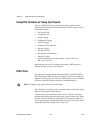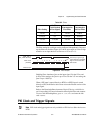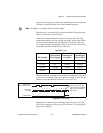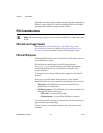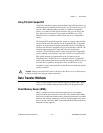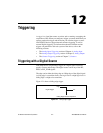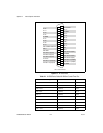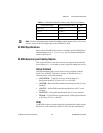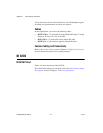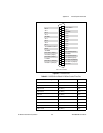Chapter 11 Bus Interface
NI 6238/6239 User Manual 11-4 ni.com
Interrupt Request (IRQ)
IRQ transfers rely on the CPU to service data transfer requests. The device
notifies the CPU when it is ready to transfer data. The data transfer speed
is tightly coupled to the rate at which the CPU can service the interrupt
requests. If you are using interrupts to transfer data at a rate faster than the
rate the CPU can service the interrupts, your systems may start to freeze.
Programmed I/O
Programmed I/O is a data transfer mechanism where the user’s program is
responsible for transferring data. Each read or write call in the program
initiates the transfer of data. Programmed I/O is typically used in
software-timed (on-demand) operations. Refer to the Software-Timed
Generations section of Chapter 5, Analog Output, for more information.
Changing Data Transfer Methods between DMA and IRQ
On PCI or PXI M Series devices, each measurement and acquisition circuit
(that is, AI, AO, and so on) has a dedicated DMA channel. So in most
applications, all data transfers use DMA.
However, NI-DAQmx allows you to disable DMA and use interrupts. To
change your data transfer mechanism between DMA and interrupts in
NI-DAQmx, use the Data Transfer Mechanism property node.



